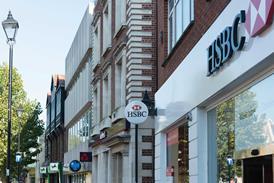Claimant Lancelot Thwaytes had owned a painting which he sold at auction through Sotheby’s for £42,000. The auction house had assessed the painting as being a copy of a well-known work by Caravaggio. After the sale, the buyer declared the painting to be by Caravaggio himself. The claimant issued proceedings against Sotheby’s alleging negligence in its investigation of the painting.
Thwaytes v Sotheby’s: Chancery Division: 16 January 2015
Duty to take care – Auctioneer – Valuation of painting – Claimant sending painting for sale through defendant auction house – Defendant assessing artist not being Caravaggio – Painting selling for £42,000 – Investigations by buyer concluding painting being by Caravaggio – Whether defendant acting negligently in assessment of painting – Whether defendant breaching duty of care
The claimant had owned a painting which he had entrusted to the defendant auction house. The painting was of the same scene as a painting by the Italian baroque artist Caravaggio. The defendant’s specialists assessed the painting using ultra-violet light and x-ray imaging, but did not conduct an infra-red assessment. The claimant was told that the painting had been assessed as being a copy, and the defendant sold it at auction for £42,000 plus buyer’s commission. The claimant received £34,468.
The buyer, who was an art scholar of great renown, carried out extensive investigations before announcing, the year after the auction, that the painting had, in fact, been painted by Caravaggio himself and was an autograph replica. The buyer was supported in that assertion by another scholar. The claimant issued proceedings in negligence and breach of contract against the defendant.
He alleged that the defendant’s expert had failed adequately to research the painting and had failed to notice certain features of it that should have indicated that it had had the potential to be a Caravaggio rather than a copy. Had the defendant performed its duties towards him properly, he alleged, he could either have sold the painting for much more money or he would have decided not to sell and would have owned a work of art of much greater value than that received on its sale.
The first issue for determination was the scope of the standard of care owed by the defendant as a leading London auction house and as one of only two generally accepted auction houses of that stature, at least with regard to Old Masters (the other being Christie’s). In his allegations of negligence, the claimant contended that the defendant had: (i) been wrong in its general approach to the painting, namely to have assessed it solely in terms of its artistic quality; (ii) failed to notice certain features of the painting which should have alerted them to its Caravaggio potential and prompted them to undertake further technical analysis and to seek the views of external scholars; (iii) been negligent in having failed to inform him of the interest that had been shown in the painting while it was displayed in advance of the sale and the fact that that attention had prompted a second meeting by the defendant to investigate whether the painting was by Caravaggio (the Olympia meeting).
The claim would be dismissed.
(1) First, those who consigned their works to a leading auction house could expect that the painting would be assessed by highly qualified people – qualified in terms of their knowledge of art history; their familiarity with the styles and oeuvres of different artists; and in terms of the connoisseur’s eye. Further, the specialists at a leading auction house would have ready access to the opinions and services of art historians at the highest levels of scholarship around the world.
Secondly, a leading auction house had to give the work consigned to it a proper examination devoting enough time to it to arrive at a firm view where that was possible. Third, it would be much more difficult for a leading auction house to rely on the poor condition of a painting as a reason for failing to notice its potential. The principle that an art expert had to know his limitations and when to bring in an expert applied as much to a leading auction house as it did to a provincial auction house, albeit that the bar for where that threshold was crossed was set at a much higher level in the case of the leading auction house.
Merely because Christie’s and Sotheby’s could be shown to act in a particular way did not automatically mean that that way was not negligent. There had to be a back stop consideration of the need to protect the interests of the client (see [76]-[79] of the judgment).
The duty undertaken by the defendant when the claimant’s painting had been consigned to them was the duty that arose generally when a painting was consigned to a leading international auction house. There were no special features in the case that extended that duty or made it more onerous (see [71] of the judgment).
Luxmoore-May v Messenger May Baverstock (a firm) [1990] 1 All ER 1067 distinguished; Wong (Edward) Finance Co Ltd v Johnson Stokes & Master [1984] AC 296 applied.
(2) The defendant had not been negligent in its assessment of the painting. It had been entitled to rely on the connoisseurship and expertise of its specialists in assessing the quality of the painting. Those specialists were highly qualified and had examined the painting thoroughly at their initial assessment and at the Olympia meeting. They had reasonably come to the view, on the basis of what they had seen, that the quality of the painting was not sufficiently high to indicate that it might be by Caravaggio.
There were no features of the painting visible at the initial assessment or the Olympia meeting that should have put the defendant on notice that the painting had Caravaggio features or non-copy features that should have caused them to question their assessment based on quality.
The defendant had been entitled to rely on its specialists to examine the x-rays of the painting to see if they had provided any information which had caused them to doubt their assessment and those specialists had reasonably come to the view that there was nothing in the x-rays that should have caused them to question their assessment based on quality.
The defendant had not been under any obligation either to carry out infra-red analysis of the painting or to have advised the claimant to arrange for that to be carried out. If they had carried out infra-red analysis they would not have found anything in the infra-red images that should have caused them to question their assessment of the painting.
The defendant had not been negligent in having failed to inform the claimant about the interest in the painting that triggered the Olympia meeting or that the Olympia meeting had taken place. If they had informed him, he would not have withdrawn the painting from sale since he would have been informed that all the defendant’s experts were certain that the painting was a period copy and not by Caravaggio (see [81]-[166] of the judgment).
Henry Legge QC and Andrew Bruce (instructed by Boodle Hatfield LLP) for the claimant; Andrew Onslow QC and Richard Edwards (instructed by Freshfields Bruckhaus Deringer) for the defendant.






























4 Readers' comments